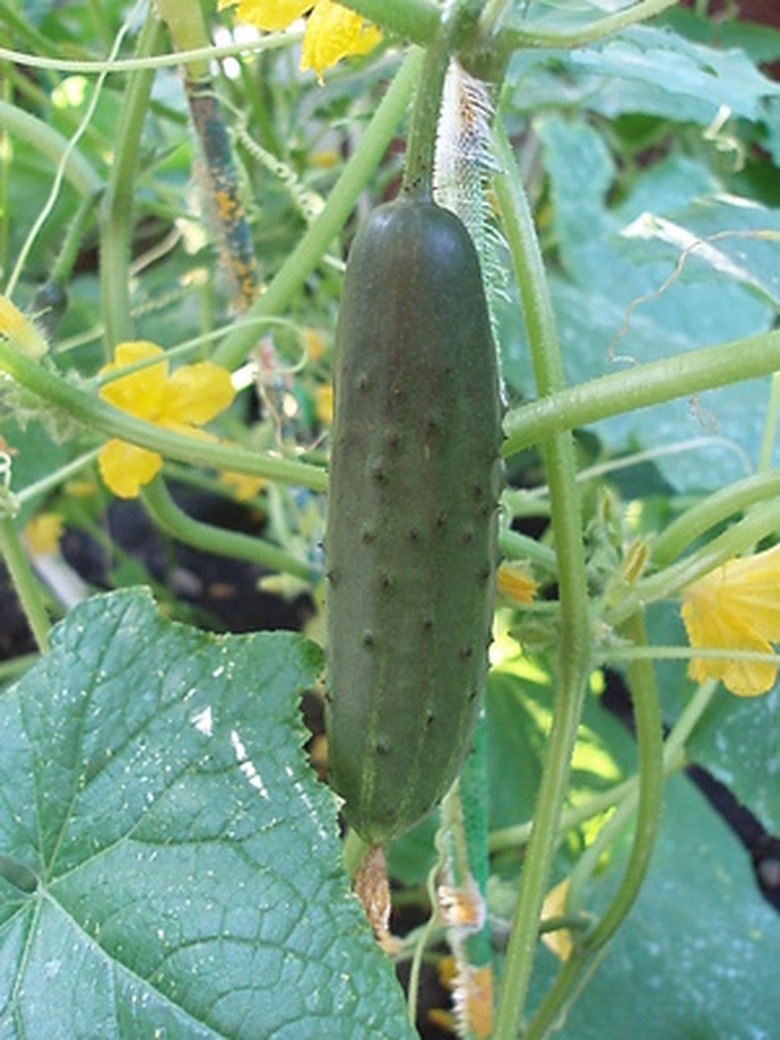Brown Spots On Cucumber Leaves
Diseases that cause brown spots on the leaves of cucumber plants also afflict other members of the Cucurbitacae plant family; these plants, called cucurbits, include melons, watermelons, pumpkins and squashes. Both fungal and bacterial diseases can cause spots on cucumber plants. Methods for preventing and treating brown spots vary with the nature of the disease.
Bacterial Disease
Angular leaf spot, Pseudomonas syringae pv. Lachrymans, infects the cucumbers and their leaves and stems. Angular, water-soaked spots on the leaves ooze bacteria. The bacteria is borne by seeds and is dispersed by rain splash during wet springs. The bacteria can survive for up to two years in debris or soil contaminated by diseased plants. There are cucumber cultivars that resist angular leaf spot.
- Diseases that cause brown spots on the leaves of cucumber plants also afflict other members of the Cucurbitacae plant family; these plants, called cucurbits, include melons, watermelons, pumpkins and squashes.
- Both fungal and bacterial diseases can cause spots on cucumber plants.
Fungal Diseases
Anthracnose, collectotrichum lagenarium/glomerella cingulata, is a fungal disease that causes yellow or reddish-brown, water-soaked spots on the leaves. The spots can turn a pinkish color in during wet weather when the spots ooze spores. Alternaria leaf blight, alternaria cucumerina, is a fungal disease that can cause spots on the leaves of cucumber plants. These tiny spots grow up to ½ inch wide, developing rings that make them look like targets. Infections occur during extended periods of hot, humid weather. Symptoms of ulcocladium leaf spot usually appear on cucumber leaves in August. The spots, sometimes confused with angular leaf spot, are beige or brown, but are also white surrounded by a dark brown ring and a brown halo. These lesions leave the leaves open to infections by angular leaf spot. The symptoms of the airborne downy mildew fungus, pseudoperonospora cubensis, appear very quickly. They produce yellow spots and spores that appear like brown flecks on the leaves.
- Anthracnose, collectotrichum lagenarium/glomerella cingulata, is a fungal disease that causes yellow or reddish-brown, water-soaked spots on the leaves.
Preventing Disease
Plant healthy seeds of disease resistant varieties. If you can avoid it, do not plant cucumbers in soil that has been growing cucurbits within the last three years. Give your cucumbers a two-and-a-half- week head start indoors or plant them in well-drained soil that has reached at least 65 degrees. Do not work with your cucumbers while they are wet or after the vines are 18 inches long. Remove and bury diseased plants and crop refuse in the fall.
Identifying Disease
The most likely diseases that cause brown spots on leaves are alternaria leaf blight, angular leaf spot and anthracnose. To select the best treatment, you first need to identify the correct disease. There are website and gardening books with photos of fungal and bacterial spots on cucumber leaves or you can consult your community's cooperative extension office or a gardening expert.
- Plant healthy seeds of disease resistant varieties.
- If you can avoid it, do not plant cucumbers in soil that has been growing cucurbits within the last three years.
Treating Diseases
Your local agricultural extension service can give you a list of USDA approved fungicides for these diseases. These are fungicides proven to work for a particular disease and that do not cause environmental damage.
